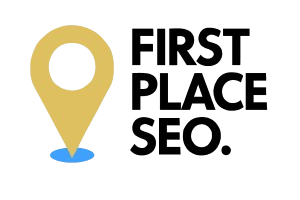sHow to Optimise Images for SEO
Optimising images for SEO is a critical aspect of enhancing your website’s visibility and performance. With the ever-increasing importance of visual content, it is essential to ensure that your images are not only appealing but also search engine friendly. In this comprehensive guide, we will delve into various strategies and techniques to optimise images for SEO, utilising a wide range of related terms and concepts.
Understanding Image SEO
Image SEO involves optimising your images to improve their visibility and ranking on search engines. This process includes several factors such as alt text, image file names, image compression, responsive images, and more. By focusing on these elements, you can enhance your site’s performance, improve user experience, and drive more traffic.
1. Importance of Alt Text
Alt text (alternative text) is a crucial element in image optimisation. It provides a textual description of your images, which helps search engines understand the content. Additionally, alt text is essential for accessibility, allowing visually impaired users to comprehend your images using screen readers.
How to Write Effective Alt Text
- Be descriptive but concise.
- Include relevant keywords naturally.
- Avoid keyword stuffing.
Example: For an image of a red apple, an effective alt text would be “A fresh red apple on a wooden table.”
2. Optimising Image File Names
Image file names play a significant role in image SEO. Using descriptive, keyword-rich filenames can improve your images’ search engine rankings. Instead of using generic names like “IMG_1234.jpg,” opt for descriptive names like “red-apple-on-wooden-table.jpg.”
Best Practices for Image File Names
- Use hyphens to separate words.
- Include relevant keywords.
- Keep it concise and descriptive.
3. Image Compression Techniques
Image compression is essential for reducing the file size of your images without compromising quality. Smaller image files load faster, which improves your website’s image loading speed and overall user experience.
Popular Image Compression Tools
- TinyPNG: Great for compressing PNG images.
- JPEG Optimiser: Ideal for JPEG images.
- Squoosh: A versatile tool supporting multiple formats, including WebP.
4. Implementing Responsive Images
Responsive images adapt to different screen sizes and resolutions, ensuring optimal display on various devices. This adaptability enhances user experience and improves your site’s SEO performance.
Techniques for Responsive Images
- Use the
srcsetattribute to provide multiple image sources. - Utilise the
sizesattribute to specify image display sizes for different viewports. - Implement CSS media queries for additional control over image display.
5. Choosing the Right Image Formats
Selecting the appropriate image format is vital for both quality and performance. The most common formats include JPEG, PNG, SVG, and WebP.
When to Use Each Format
- JPEG: Best for photographs and complex images with many colors.
- PNG: Ideal for images with transparency or sharp edges.
- SVG: Perfect for scalable graphics, icons, and logos.
- WebP: Offers superior compression without significant quality loss.
6. Creating and Submitting Image Sitemaps
An image sitemap helps search engines discover and index your images. By including images in your sitemap, you can improve their visibility and ranking.
Steps to Create an Image Sitemap
- List all the images on your website.
- Format the sitemap using XML.
- Submit the sitemap to search engines via Google Search Console or other webmaster tools.
7. Utilising Lazy Loading
Lazy loading delays the loading of images until they are needed, such as when they come into the user’s viewport. This technique improves page load times and enhances user experience.
Implementing Lazy Loading
- Use the
loading="lazy"attribute in yourimgtags. - Utilise JavaScript libraries like LazyLoad.js for more advanced implementations.
8. Enhancing Image Context with Captions and Titles
Image captions and title attributes provide additional context to your images. Captions appear below images and can help engage users, while titles offer extra information on hover.
Writing Effective Captions and Titles
- Keep captions relevant and concise.
- Use keywords naturally in titles without overstuffing.
- Ensure both elements are informative and enhance user understanding.
9. Leveraging Content Delivery Networks (CDNs)
A Content Delivery Network (CDN) distributes your images across multiple servers worldwide, ensuring faster load times and improved performance.
Benefits of Using a CDN for Images
- Reduced latency and faster load times.
- Enhanced user experience due to quicker image delivery.
- Improved site performance during traffic spikes.
10. Incorporating Image Metadata
Image metadata, such as EXIF data, provides additional information about your images. Including relevant metadata can improve image searchability and SEO.
Types of Metadata to Include
- Title: A brief description of the image.
- Description: Detailed information about the image content.
- Keywords: Relevant keywords related to the image.
11. Ensuring High-Resolution Images
Using high-resolution images ensures that your content appears crisp and clear on all devices, especially on high-definition screens. However, balancing quality and file size is crucial to maintain fast loading times.
Tips for High-Resolution Images
- Use tools like Adobe Photoshop to optimise image quality.
- Save images in appropriate formats that support high resolutions, such as JPEG and WebP.
- Regularly audit your site to replace low-quality images with high-resolution versions.
12. Prioritising User Experience (UX)
A positive user experience (UX) is essential for retaining visitors and improving SEO. Optimising images plays a significant role in enhancing UX by ensuring fast load times, clear visuals, and accessibility.
Improving UX with Image Optimisation
- Ensure images load quickly by compressing and lazy loading.
- Use responsive images to cater to various devices.
- Provide descriptive alt text and captions for better understanding.
13. Efficient Image Hosting
Choosing the right image hosting solution can significantly impact your site’s performance. Consider using specialised image hosting services that offer fast load times, security, and scalability.
Top Image Hosting Services
- Cloudinary: Offers advanced image management and optimisation features.
- Imgix: Provides real-time image processing and delivery.
- Amazon S3: Scalable storage solution with robust security features.
14. Ensuring Accessibility
Making your images accessible ensures that all users, including those with disabilities, can interact with your content. Accessibility practices not only enhance user experience but also comply with legal requirements.
Accessibility Best Practices
- Use descriptive alt text for all images.
- Ensure text within images has sufficient contrast for readability.
- Provide text alternatives for complex images, such as charts and infographics.
15. Monitoring and Analysing Image Performance
Regularly monitoring and analysing your images’ performance helps you identify areas for improvement and ensure your SEO efforts are effective.
Tools for Image Performance Analysis
- Google Analytics: Track image load times and user interaction.
- PageSpeed Insights: Analyse page speed and receive optimisation recommendations.
- Lighthouse: Audit your site’s performance, accessibility, and SEO.
Final Insights
Optimising images for SEO is a multifaceted process that requires attention to detail and a strategic approach. By focusing on elements such as alt text, image file names, image compression, responsive images, and lazy loading, you can significantly enhance your website’s performance and visibility. Additionally, leveraging Content Delivery Networks (CDNs), ensuring high-resolution images, and maintaining accessibility are crucial for a positive user experience (UX).
Implement these best practices to ensure your images contribute effectively to your overall SEO strategy, driving more traffic and improving user engagement. Keep up with the latest trends and continuously optimise your images to stay ahead in the competitive digital landscape.

